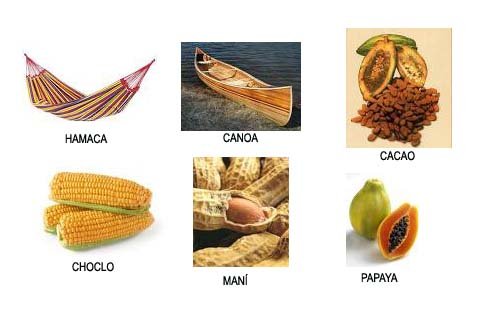The history of the lexical influences that have come into contact with the Spanish language is one steeped in geography, politics and colonization. When Christopher Columbus arrived in the Americas representing the Spanish crown, he was immediately put into contact with various native groups and tribes with their own respective languages. As colonization spread out over the continent, the penetration of these influences grew, adding words to the Spanish language that might sometimes be taken for granted as being from the original Castilian.
Spanish words with indigenous origin
With the discovery of new technologies, crafts or inventions, comes the discovery of the terms given to them. One of these which Columbus discovered from the local mode of transportation was canoas. It was not long before the term replaced the word Columbus had used to describe them in his journals — almadía. The Castilian word was simply not an accurate description of this form of transport, and so for simplicity the native word was quickly adopted. The Spanish explorers also discovered hammocks in the Americas, and adopted the indigenous word hamaca to refer to them.
This penetration of local vocabulary also occurred with indigenous flora and fauna which did not exist in Europe at that time, and thus for which there were no existing words in Castilian Spanish. Ají is an example of this (a separate item from “pimienta”, although Columbus used the latter term to refer to the former.) Tiburón was another borrowed word, as well as iguana, manatí and guacamayo. And from the local flora came maní, camote, cacao, tomate, tamal, and papaya, among others. The sheer variety of vegetation and wildlife in South America lent the Spanish language many words in these categories from the region’s indigenous languages.
Because weather patterns also vary between continents, the explorers were simultaneously introduced to both hurricanes as well as the local term for them – huracanes, or huracán in the singular. And not to be left out, geography also contributed some words to Castilian Spanish during the initial period of mutual influence, such as cayo from the many cays found in the Caribbean.
Indigenous penetration into mainstream Spanish
When these words finally began to make appearances in texts from Spanish writers, they were not included as exotic novelties, as was the case with lexical influences occurring in other regions at that time. Instead, they were used simply as descriptors, introducing their usage into mainstream Spanish and simultaneously avoiding associations with “otherness”, at least in relation to the words themselves. But even with the mainstream introduction of many words with indigenous origin, there were still others that eventually fell out of use, such as cazabe for bread. Moreover, many terms from indigenous languages never extended beyond their local or regional influence. Even today, many terms from the Quechua language — choclo for corn, for example — are not used outside of areas with some connection to the Andes.
Of course, many of the indigenous languages which contributed to the Spanish lexicon no longer exist today. And in those cases, the words that we use when communicating in Spanish are their only living remnants.





Brazilian Portuguese also has tons of words that come from indigenous languages